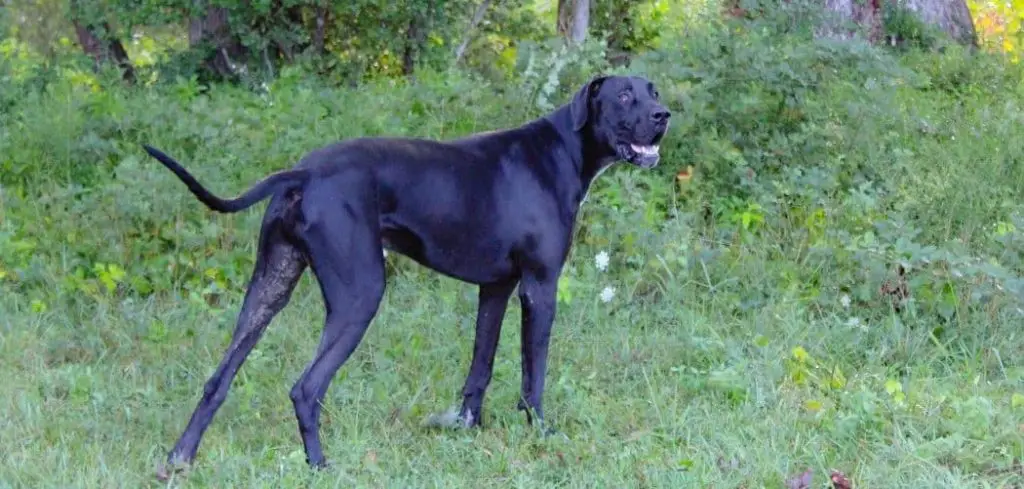When your dog is moving slowly and refusing to eat, it’s a worrying combination that could signal a range of underlying health issues. These symptoms might indicate anything from fatigue and infections to serious organ problems or pain.
We outline the common causes of a dog moving slowly and not eating, what you can do at home, and when to seek veterinary help.
Dog Moving Slow and Not Eating — Why It Happens
Dogs that suddenly slow down and skip meals are often dealing with more than just a bad day. This change in behavior could point to pain, fever, dehydration, internal disease, or chronic fatigue. Conditions like arthritis, infections, kidney disease, or digestive troubles may all be responsible. Behavioral factors such as stress or anxiety can also play a role, especially if the shift is sudden and unexplained.

Common Causes of Dog Moving Slow and Not Eating
Pain or Injury
Pain can cause your dog to avoid movement and food altogether.
If your dog is sore from arthritis, a sprain, or muscle strain, they may walk more slowly or seem reluctant to get up.
Painful conditions often lead to loss of appetite because dogs naturally limit activity and eating when they feel unwell.
You might notice limping, whining, avoiding stairs, or changes in posture.
This combination of symptoms should never be ignored.
Read more: Dog Losing Balance and Not Eating(When wobbling becomes worrying)
Infections or Fever
Fever often causes dogs to move sluggishly and lose interest in eating.
Infections, whether bacterial or viral, may make your dog feel fatigued and unwell.
From urinary tract infections to tick-borne diseases, any internal inflammation can affect their energy and appetite.
Look for additional signs like warm ears, nasal discharge, coughing, or vomiting.
Dehydration
Dehydrated dogs become lethargic and may refuse food altogether.
Whether due to vomiting, diarrhea, or simply not drinking enough, dehydration affects overall function and energy.
A slow-moving dog who won’t eat and has dry gums, sunken eyes, or skin that doesn’t bounce back easily might be dehydrated.
Severe dehydration is dangerous and requires urgent care.
Digestive Upset
GI problems are a common cause of reduced appetite and sluggishness.
Dogs with nausea, bloating, constipation, or diarrhea often feel too uncomfortable to move around or eat.
A dog may appear to be moving slow simply because they’re trying to avoid further stomach discomfort.
You may see lip licking, drooling, or stretching their abdomen if the GI tract is affected.
Kidney or Liver Disease
Chronic organ conditions can sap a dog’s energy and suppress appetite.
Dogs with kidney or liver disease may show vague signs at first: slow movement, weight loss, and lack of interest in food.
Over time, vomiting, bad breath, jaundice, or increased urination may emerge.
Early detection is crucial for managing these conditions.
Hypothyroidism
This hormonal disorder causes fatigue and a slowed metabolism.
Dogs with hypothyroidism often become sluggish, gain weight, and show less interest in food or play.
They may develop a dull coat, cold intolerance, and general disinterest in daily activities.
This is more common in middle-aged to older dogs.
What to Do If Your Dog Is Moving Slow and Not Eating
Start by monitoring your dog’s behavior closely.
Is the slow movement consistent throughout the day, or does it improve at certain times? Is your dog drinking water? Check for signs of dehydration, pain, or bloating.
Encourage rest in a quiet, comfortable space. Sometimes a brief period of rest and gentle coaxing with bland foods (like boiled chicken or rice) may help a mild case.
Make sure your dog is drinking water. You can try adding low-sodium broth to entice hydration.
If your dog is eating nothing, appears in pain, or the symptoms persist more than a day, call your vet.
When to Call or Visit Your Vet
Reach out to your veterinarian right away if:
Your dog refuses food or water for more than 24 hours.
They are vomiting, have diarrhea, or are showing signs of dehydration.
You notice obvious pain, limping, or sensitivity when touched.
There are additional symptoms like coughing, bad breath, yellowing eyes/gums, or collapsing.
The sluggishness gets worse or does not improve with rest.
These signs may indicate something serious that requires medical evaluation, testing, and treatment.
Read more: Dog Lethargic and Not Eating But Drinking Water (When it’s urgent)
Key Takeaway
A dog moving slowly and not eating is almost always a sign that something is wrong.
From pain and infection to digestive or hormonal problems, these symptoms should never be brushed off.
Watch your dog carefully and seek veterinary help if the symptoms last more than a day or worsen.
Your dog’s body language is their way of telling you they need help—and you’re their best advocate.
